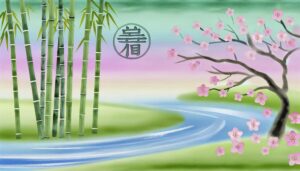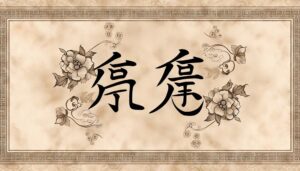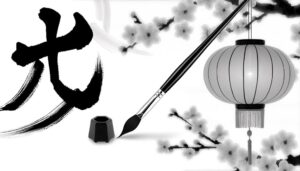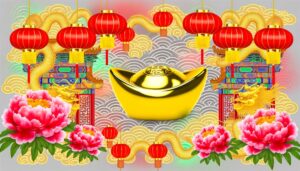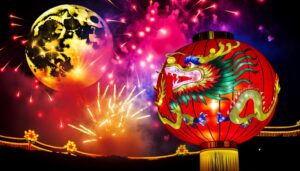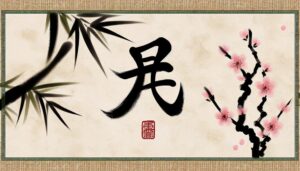Chinese Symbol for Good Fortune: What Does It Represent?
The Chinese symbol for good fortune, '福' (fú), bears significant historical and cultural connotations, originating in ancient Chinese dynasties such as Zhou, Qin, and Han. It symbolizes divine blessing and protection.
Rich archaeological evidence underscores its usage in early ceremonial practices. Artistic representations of '福' are ubiquitous in traditional and contemporary Chinese art, linking with themes of prosperity and happiness.
During Lunar New Year, it is prominently displayed to usher in prosperity. Variations in regional styles reflect deeper cultural nuances.
If you explore further, you will gain insights into its multifaceted roles in Chinese traditions and modern uses.
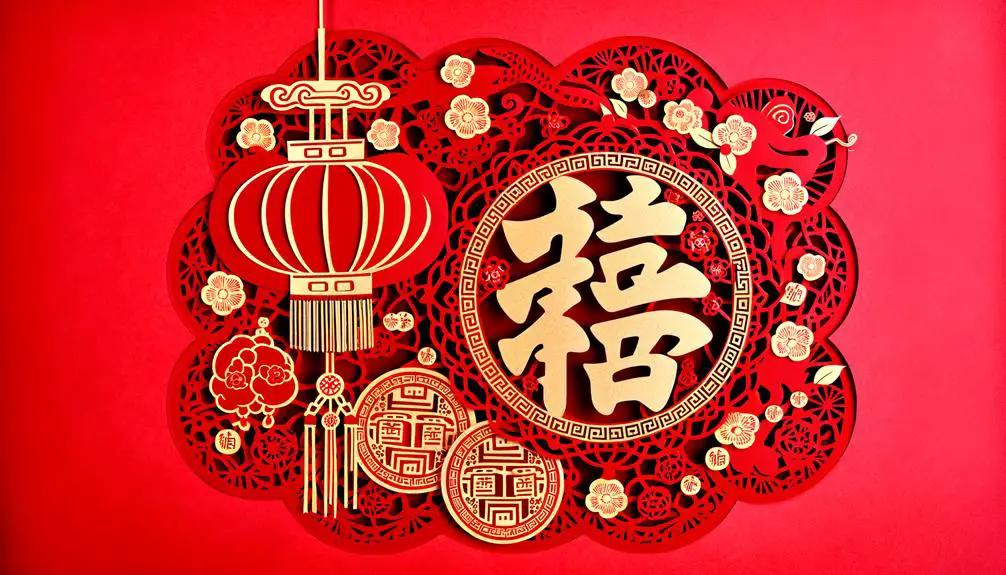
Key Takeaways
- The Chinese symbol for good fortune is '福' (fú).
- It symbolizes prosperity, happiness, and divine blessings in Chinese culture.
- The symbol is prominently used in Lunar New Year celebrations and various regional traditions.
- Contemporary applications include interior design, fashion, digital art, and corporate branding.
- Traditional calligraphy and folklore emphasize its historical and cultural significance.
Historical Origins
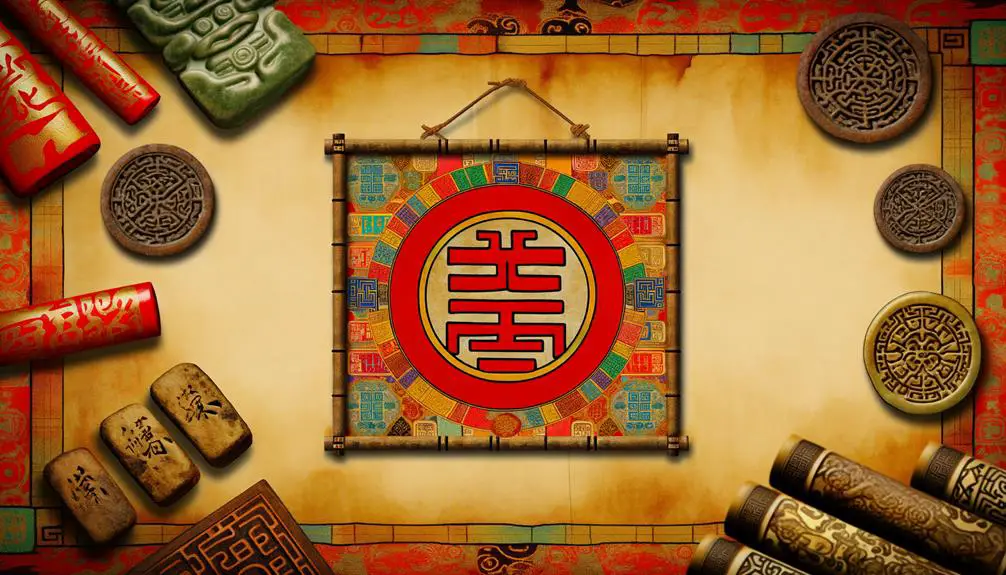
The historical origins of the Chinese symbol for good fortune, known as '福' (fú), can be traced back to ancient Chinese dynasties where it was deeply embedded in cultural and religious practices.
During the Zhou Dynasty (1046-256 BCE), the character fú was associated with the concept of divine blessing and protection. Archaeological findings reveal inscriptions on oracle bones and bronze vessels, signifying its use in ceremonial rites and offerings to deities.
The symbol evolved through subsequent dynasties, including the Qin (221-206 BCE) and Han (206 BCE-220 CE), reflecting shifts in socio-religious contexts. Over centuries, fú retained its core meaning while integrating Confucian, Daoist, and Buddhist elements, underscoring its enduring significance in historical and literary texts.
Cultural Significance
The cultural significance of the Chinese symbol for good fortune encompasses its deep historical roots, varied symbolic interpretations, and prevalent festive uses.
Historically, this symbol has been intertwined with Chinese traditions and philosophies, reflecting a rich cultural heritage.
Symbolically, it conveys wishes for prosperity and happiness, while its usage during festivals like the Lunar New Year underscores its importance in communal and familial celebrations.
Historical Roots
Tracing its origins back to ancient Chinese traditions, the symbol for good fortune, 福 (fú), holds deep cultural significance that has evolved through centuries of historical developments and social practices.
Initially linked to agrarian rituals and the veneration of deities associated with prosperity, 福 was believed to invoke blessings and abundance. During the Zhou Dynasty (1046-256 BCE), its use became formalized in state ceremonies and literary texts.
The Han Dynasty (206 BCE-220 CE) further cemented its importance, integrating it into Confucian ideals of family harmony and societal order. Over time, 福 transcended religious contexts, becoming a ubiquitous emblem in festivals, architectural designs, and everyday artifacts, thereby embedding itself into the fabric of Chinese cultural heritage.
Symbolic Interpretations
As 福 (fú) evolved from its historical roots, it accrued layers of symbolic interpretations that reflect its profound cultural significance in Chinese society.
Central to this evolution is the character's embodiment of good fortune, prosperity, and happiness. The semantic richness of 福 extends to various aspects of life, symbolizing not just material wealth but also spiritual well-being and familial harmony.
This multifaceted symbol is deeply ingrained in cultural practices, literature, and art, where it often appears in calligraphy, embroidery, and architecture. Its ubiquitous presence during significant life events underscores its role as a harbinger of auspicious outcomes.
Consequently, 福 transcends mere linguistic representation, becoming a cornerstone of cultural identity and collective aspiration.
Festive Uses
In Chinese culture, 福 (fú) prominently features in festive celebrations, symbolizing the collective wish for good fortune and prosperity in the coming year.
Its presence is particularly notable during the Lunar New Year, where the character is often displayed on red paper and hung upside down on doors and windows. This inversion signifies the arrival of blessings, as the word for 'upside down' (倒, dào) sounds like 'arrive' (到, dào) in Mandarin.
Additionally, 福 (fú) is integrated into decorative arts, such as paper cuttings and embroidered textiles, underscoring its pervasive presence. This practice not only reflects cultural heritage but also reinforces communal aspirations for health, wealth, and happiness, embodying the intrinsic values of Chinese society.
Symbolism in Art
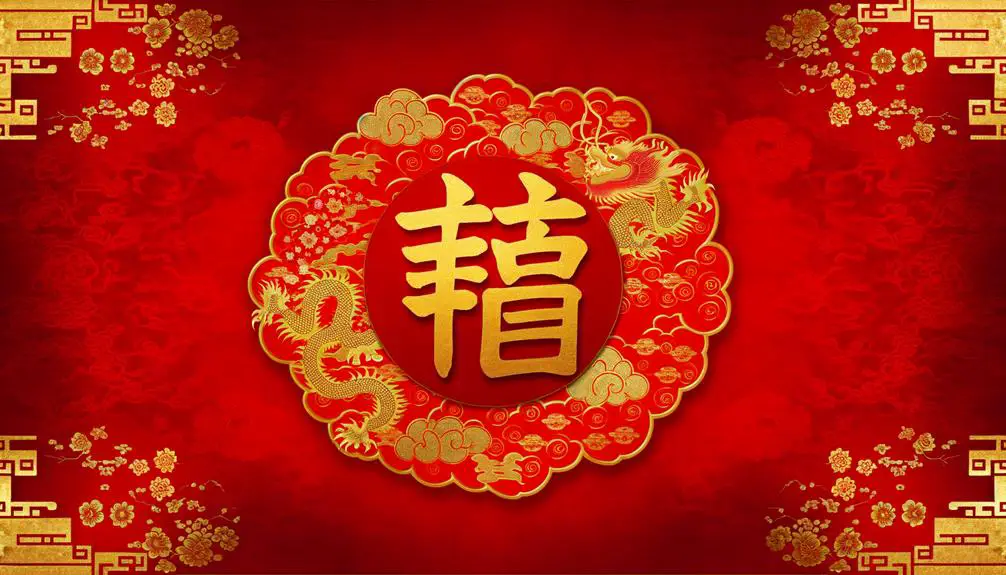
The Chinese symbol for good fortune has been a prominent motif in traditional artistic depictions, often embodying profound cultural significance within various forms of visual art, such as paintings.
This symbolism not only reflects historical values but also influences contemporary artistic interpretations, bridging the past and present.
Analyzing these representations reveals the evolution of cultural narratives and the enduring relevance of this auspicious symbol in modern art.
Traditional Artistic Depictions
Numerous traditional artistic depictions of the Chinese symbol for good fortune intricately incorporate elements of nature, mythology, and cultural motifs to convey its auspicious meaning. These depictions often feature harmonious compositions that blend flora, fauna, and mythological creatures alongside the symbol, enhancing its visual and symbolic richness. The following table illustrates common motifs and their symbolic meanings:
| Element | Symbolism | Emotional Impact |
|---|---|---|
| Peonies | Prosperity and Honor | Joy and Admiration |
| Dragons | Strength and Power | Awe and Inspiration |
| Phoenix | Renewal and Harmony | Hope and Resilience |
| Bamboo | Resilience and Luck | Tranquility and Peace |
This confluence of visual elements serves not only to beautify the artwork but also to deepen the viewer's connection to the symbol's profound cultural significance.
Cultural Significance in Paintings
Artistic representations of the Chinese symbol for good fortune in paintings reveal a profound interplay between visual aesthetics and cultural narratives, embodying layers of symbolic meaning that resonate deeply within the context of Chinese heritage.
These paintings are more than mere artistic endeavors; they serve as cultural artifacts that convey societal values and beliefs. The incorporation of this symbol into art typically emphasizes:
- Prosperity: Depicting abundance and wealth, often intertwined with symbols like fish or coins.
- Longevity: Integrating elements such as pine trees or cranes, reinforcing the desire for a long life.
- Harmony: Featuring harmonious scenes, aligning with Confucian ideals of societal balance.
- Spirituality: Utilizing religious iconography, connecting the earthly with the divine.
Each element meticulously intertwines to convey a cohesive cultural narrative.
Modern Artistic Interpretations
Contemporary artists integrate the Chinese symbol for good fortune into their works, employing innovative techniques and mediums to reinterpret traditional cultural motifs. This integration reflects a dynamic dialogue between heritage and modernity, allowing artists to explore and expand the symbol's relevance in today's context.
For instance, mixed media artists might juxtapose the symbol with digital imagery, creating a visual tension that underscores the intersection of past and present. In addition, sculptors utilize unconventional materials such as recycled plastics or metals, imbuing the symbol with contemporary environmental concerns.
Through these modern artistic interpretations, the symbol for good fortune transcends its traditional bounds, inviting viewers to reconsider its significance in a rapidly evolving global cultural landscape.
Lunar New Year Traditions
The Lunar New Year, deeply ingrained in Chinese culture, is celebrated with a variety of traditions that symbolize prosperity, unity, and good fortune. These traditions are carefully observed to ensure an auspicious start to the year.
Key customs include:
- Reunion Dinner: Families gather for a feast on New Year's Eve, emphasizing kinship and unity.
- Red Envelopes: Elders gift money in red packets to younger family members, symbolizing luck and protection.
- Spring Cleaning: Homes are thoroughly cleaned to sweep away ill-fortune and make way for incoming good luck.
- Decorations: Houses are adorned with red lanterns, couplets, and the character '福' (fú), symbolizing good fortune.
These practices collectively embody the essence of the Lunar New Year celebrations.
Contemporary Uses

Beyond traditional practices, the Chinese symbol for good fortune has found its place in various aspects of contemporary life, reflecting its persistent cultural significance.
In modern interior design, this symbol frequently adorns homes and businesses, believed to attract prosperity and positive energy.
Also, it is prevalent in fashion, where it is incorporated into clothing, jewelry, and accessories, symbolizing a blend of cultural pride and modern aesthetics.
The digital world also embraces this emblem; emojis and digital art often feature it, facilitating its global recognition.
Additionally, it is employed in corporate branding and marketing to convey auspiciousness and success.
Therefore, the Chinese symbol for good fortune continues to be a versatile and enduring element in contemporary cultural expressions.
Regional Variations
Regional variations in the Chinese symbol for good fortune reveal distinct interpretations and adaptations that reflect the diverse cultural landscapes across different areas.
These variations can be categorized as follows:
- Southern China: The symbol is often accompanied by floral motifs, emphasizing growth and prosperity.
- Northern China: The symbol may include more angular and bold strokes, representing strength and resilience.
- Eastern China: Incorporates elements of water and fish, symbolizing abundance and wealth.
- Western China: Features pastoral and mountainous themes, highlighting harmony with nature.
Each region's unique cultural context and historical influences shape how the symbol is rendered and perceived, underscoring the rich tapestry of Chinese heritage.
Understanding these regional distinctions provides a deeper appreciation for the symbol's multifaceted nature.
Symbol in Calligraphy
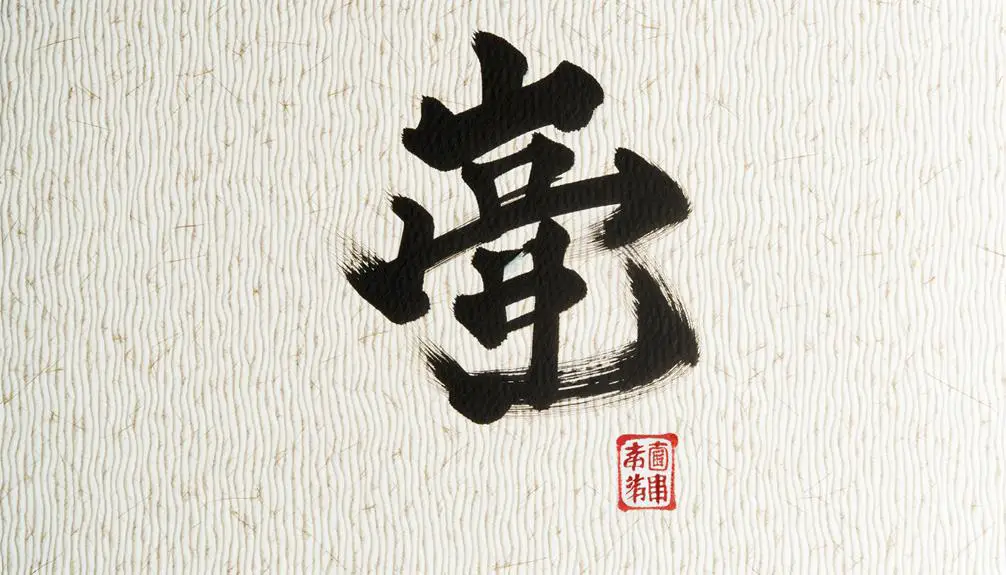
In the art of calligraphy, the symbol for good fortune is meticulously crafted to convey both aesthetic beauty and profound meaning. This symbol, often rendered as the character '福' (fú), is a cornerstone in Chinese culture.
Calligraphers employ various styles, such as Seal Script, Clerical Script, and Regular Script, to present this character, each style offering a unique visual interpretation. The balance, stroke order, and fluidity in the creation of '福' are paramount.
The character typically consists of a radical that denotes an altar, symbolizing offerings to deities, and a component that signifies abundance. Therefore, the calligraphic execution of '福' marries form and function, embodying cultural values while adhering to strict artistic principles.
Folklore and Legends
Chinese folklore and legends are replete with narratives that emphasize the transformative power of the symbol for good fortune, '福' (fú), in shaping human destiny and cultural values. This symbol holds a pivotal role in various tales, reflecting its profound impact on societal norms and individual aspirations.
Notable instances include:
- The Legend of Fu Xi and Nuwa: This tale portrays how the primordial deities bestowed the symbol upon humanity to guarantee prosperity.
- The Story of the Five Blessings: Emphasizing longevity, wealth, health, virtue, and a natural death, this narrative underscores the inclusive nature of '福'.
- The Tale of the Kitchen God: Here, '福' is used to secure divine favor and protect the household.
- The Lunar New Year Traditions: Displaying '福' inverted symbolizes the arrival of good fortune.
These stories illustrate the enduring significance of '福' in Chinese culture.
Incorporating the Symbol at Home
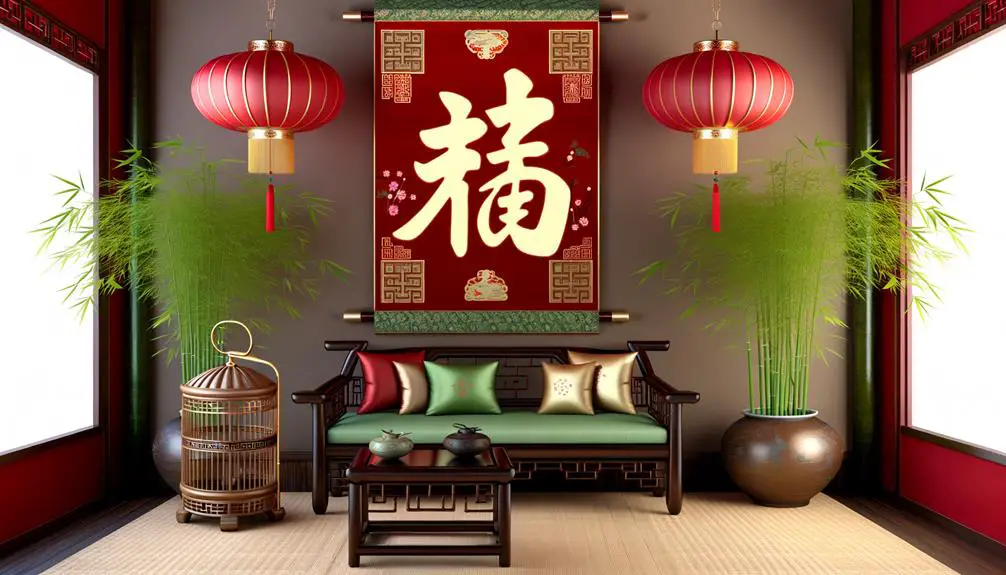
Building on the rich tapestry of folklore and legends, the practical application of the symbol '福' (fú) within the home underscores its role in fostering prosperity and well-being. Strategically placing this symbol in various household locations can enhance its auspicious effects. Below is an analytical view of potential placements and their associated benefits.
| Location | Placement Method | Intended Effect |
|---|---|---|
| Entrance | Above the door | Welcomes good fortune |
| Living Room | Wall art or decor | Promotes harmony and unity |
| Bedroom | On a bedside table | Enhances personal well-being |
| Kitchen | Near the dining area | Secures abundance in sustenance |
This table elucidates how specific placements can optimize the symbol's positive influence, thereby harmonizing the home environment.
Conclusion
The Chinese symbol for good fortune, rooted in ancient history, weaves a rich tapestry across cultural practices, art, and folklore. Its presence illuminates celebrations such as the Lunar New Year, while its adaptability in contemporary contexts underscores its enduring relevance.
The symbol's variations and calligraphic elegance further underscore its profound cultural resonance. Like a guiding star, it continues to inspire and bestow blessings, reflecting the collective aspirations and values of those who cherish its timeless significance.

